The Ultimate Guide to Slatwall Fixtures for Retailers
-
 By
American Retail Supply
By
American Retail Supply - Sep 11, 2024

Presentation and the ability for customers to browse easily are paramount in retail, and retailers constantly seek innovative ways to display products and maximize their selling spaces. One solution that has stood the test of time in providing both functionality and aesthetic appeal is slatwall fixtures. Explore this ultimate guide to slatwall fixtures for retailers to ensure you make the most of this versatile display option for your store.
What Are Slatwall Fixtures?
Slatwall fixtures are wall-mounted panels featuring horizontal grooves or slats where various accessories can be inserted to hold and display products. Originating in the 1960s, slatwall has evolved into a staple in retail environments due to its adaptability and ease of use. Retailers can quickly rearrange displays by simply moving the accessories along the slats, making slatwall fixtures an essential tool for dynamic and customer-friendly store layouts.
The Benefits of Slatwall Fixtures
One of the most significant advantages of slatwall fixtures is their versatility. Unlike traditional shelving units, slatwall panels can be customized with various accessories, including hooks, shelves, and baskets. This allows retailers to display various products—from clothing and accessories to electronics and home goods—without needing multiple types of display systems.
Slatwall fixtures are also excellent for maximizing space. By using the vertical space on walls, retailers can free up floor space for customers to move around comfortably. This enhances the shopping experience and enables the store to display more products in an organized and visually appealing manner.
Furthermore, slatwall fixtures contribute to improved visual merchandising. The sleek design of slatwall panels, combined with carefully chosen accessories, can create an attractive and cohesive display that draws customers’ attention and encourages them to explore the store.
Types of Slatwall and Accessories
Various types of slatwall panels are available, each catering to different retail needs. Standard slatwall panels are typically made from medium-density fiberboard (MDF) and come in a range of finishes, such as wood grain, laminate, and painted surfaces. For a more upscale look, retailers can opt for aluminum or acrylic slatwall, which offers a modern and polished appearance.
The options for accessories are virtually limitless. Hooks are perfect for hanging items like clothing, bags, and tools. Shelves can display folded apparel, shoes, or small electronics, and baskets are ideal for holding bulkier items or products that customers can easily pick up and inspect. Specialized accessories, such as brochure holders, sign holders, and even lighting options, further enhance the displays.
Considerations When Choosing Slatwall Fixtures
Retailers must take into account several factors when selecting slatwall fixtures for their stores. First, they need to consider the types of products they will display and choose accessories that best accommodate those items. For example, a combination of hooks and shelves may be most effective if they primarily sell clothing.
Next, they must consider their stores’ overall aesthetics. The finish and color of the slatwall panels should complement each store’s design and branding. Additionally, the quality and durability of the materials are crucial, as slatwall fixtures should withstand the wear and tear of a busy retail environment.
Lastly, they need to think about the ease of installation and maintenance. Some slatwall panels come pre-finished and ready to install, while others may require additional painting or finishing. Ideally, they should ensure that the installation process is straightforward and that the materials are easy to clean and maintain over time.
Slatwall Layouts
Designing an effective slatwall layout involves strategic planning to maximize space and enhance the retail environment. Retailers must start by assessing the available wall space and deciding where the slatwall panels will be installed. They should consider areas that receive high foot traffic and ensure that the displays are easily accessible to customers.
Furthermore, they must think about their stores’ flow and how customers will move through the spaces. To capture attention, they can place high-demand or promotional items at eye level and in prominent locations. Grouping similar products together creates cohesive and visually appealing sections. Also, leaving enough space between displays prevents overcrowding and ensures customers can comfortably look at the products.
How To Make the Most of Slatwall Displays
To get the most out of a slatwall display, retailers should follow a few key tips. First, regularly update and refresh the displays to keep them interesting and engaging for customers. This can involve rearranging accessories, introducing new products, or creating themed displays based on seasons or promotions.
Use a variety of accessories to add depth and dimension to the displays. Combining hooks, shelves, and baskets can create a dynamic and visually appealing presentation that draws customers in. Additionally, consider incorporating signage and lighting to highlight specific products or promotions.
Finally, pay attention to the overall organization and cleanliness of the displays. Make sure that products are neatly arranged and that the slatwall panels and accessories are free of dust and debris. Well-maintained displays not only enhance the shopping experience but also positively reflect on each retailer’s brand.
Slatwall Installation Guide
Installing slatwall panels is a straightforward process that can be accomplished with a few essential tools. Gather the necessary materials, including slatwall panels, screws, a drill, a level, and a measuring tape.
Begin by measuring the wall space where the panels will be installed and marking the desired height and width. Use a level to ensure that the markings are straight and even. Next, position the first slatwall panel against the wall and secure it in place with screws, starting from the top and working down. Repeat this process for each additional panel, ensuring the grooves align seamlessly for a continuous and cohesive look.
Once the panels are securely installed, insert the desired accessories into the slats. Adjust their placement as needed to create the desired display layout.
Slatwall Maintenance and Care
Maintaining slatwall fixtures is essential for keeping them looking their best and ensuring longevity. Regularly dust and clean the panels and accessories to prevent the buildup of dirt and debris. Use a soft cloth or duster to gently wipe down the surfaces, and avoid using harsh chemicals or abrasive materials that could damage the finish.
Inspect the fixtures periodically to ensure they are secure and in good condition. Tighten any loose screws or fittings, and replace any damaged accessories as needed. Additionally, take the time to reorganize and refresh the displays to keep them looking neat and appealing.
Encourage staff to take an active role in maintaining the slatwall fixtures. Provide training on proper cleaning techniques and emphasize the importance of keeping the displays organized and presentable.
Incorporating slatwall fixtures into retail spaces offers numerous benefits, from maximizing space and enhancing visual merchandising to providing a versatile and customizable display solution. By following this complete guide to slatwall fixtures for retailers, you can create an organized and visually appealing shopping environment that attracts customers and drives sales.
If you want to transform your retail space with these fixtures, check out American Retail Supply’s extensive range of slatwall displays and accessories. Our expert team is available to assist you in selecting the right products and provide guidance on installation and maintenance.
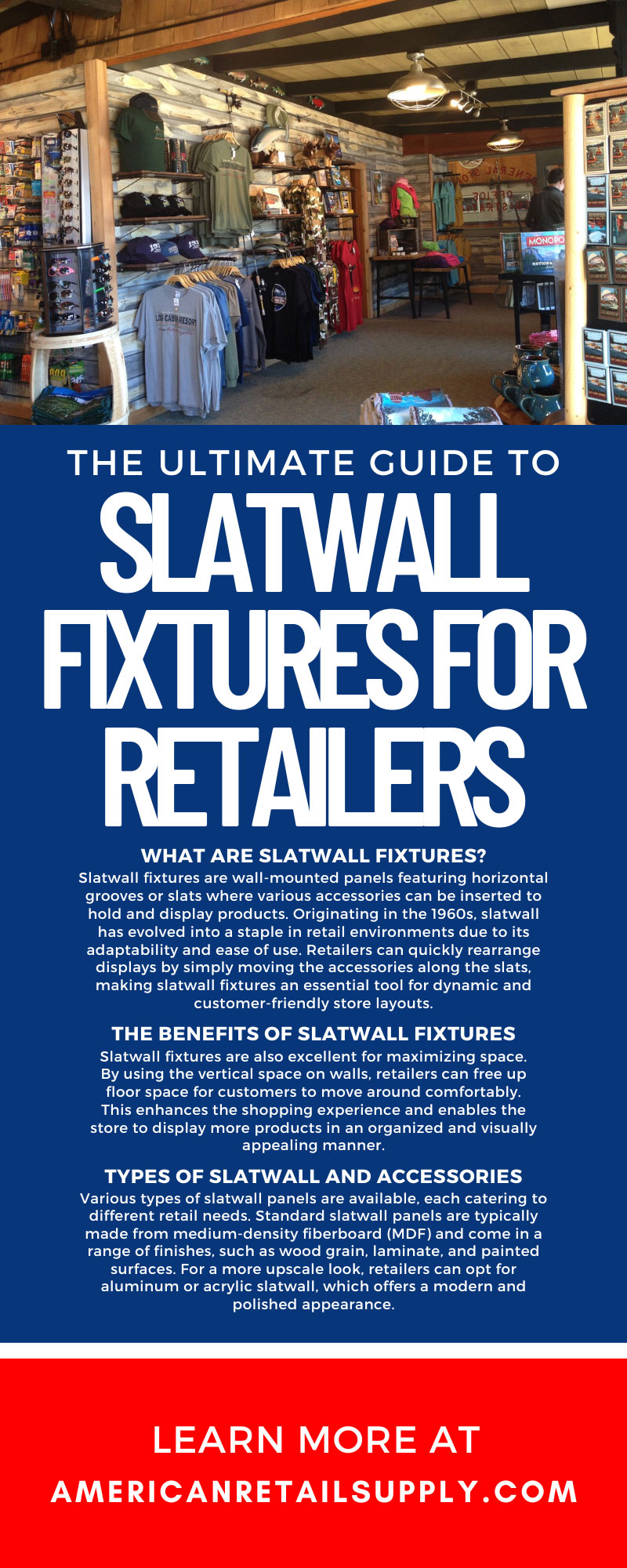







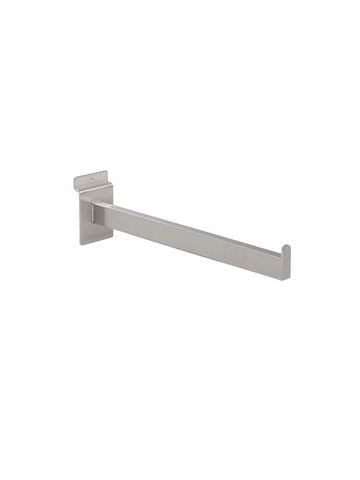
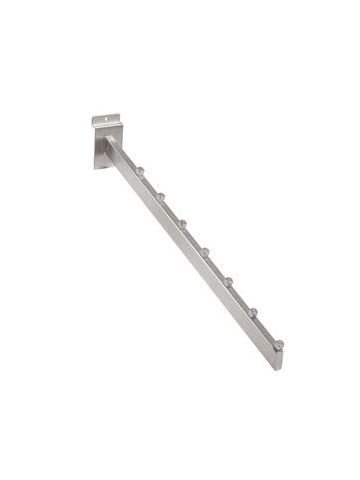
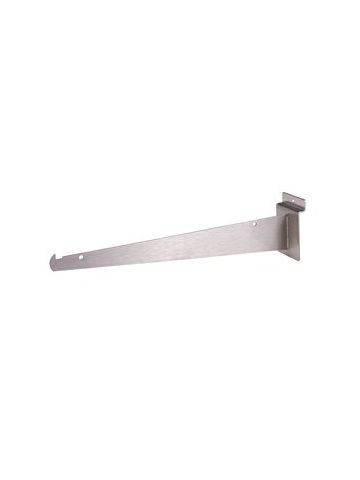
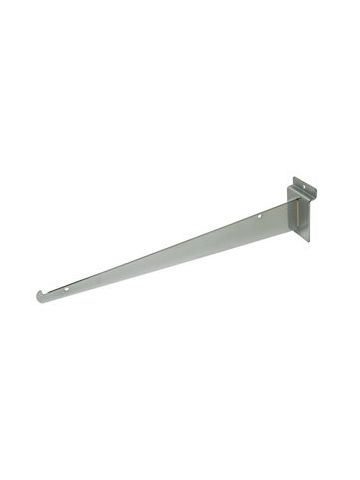
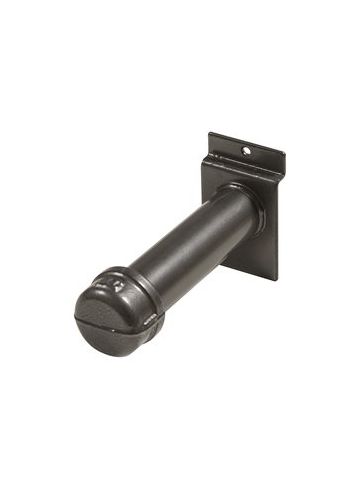
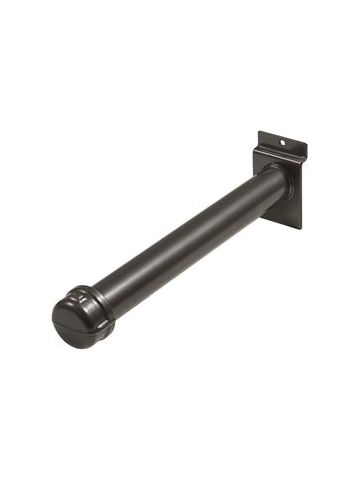
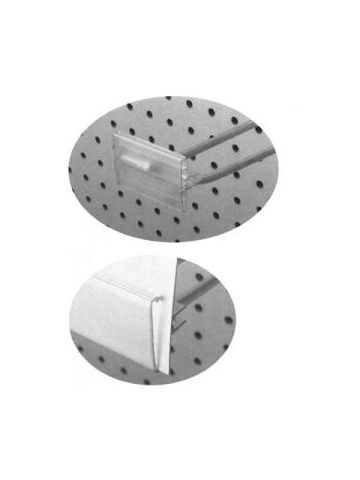




Validate your login